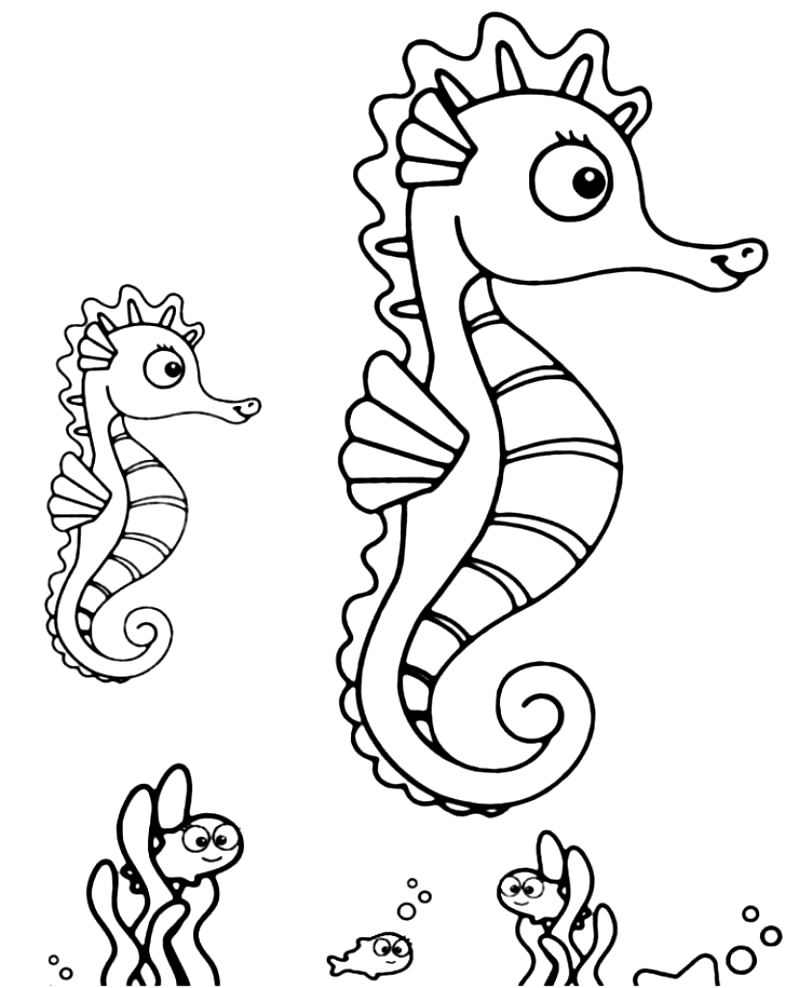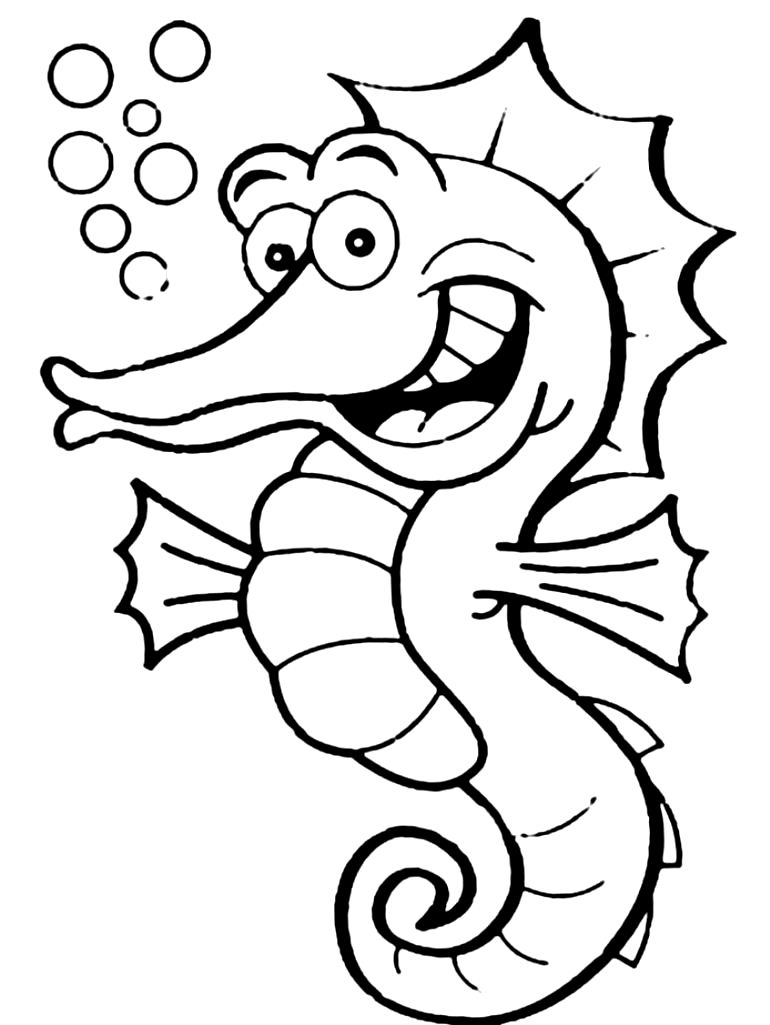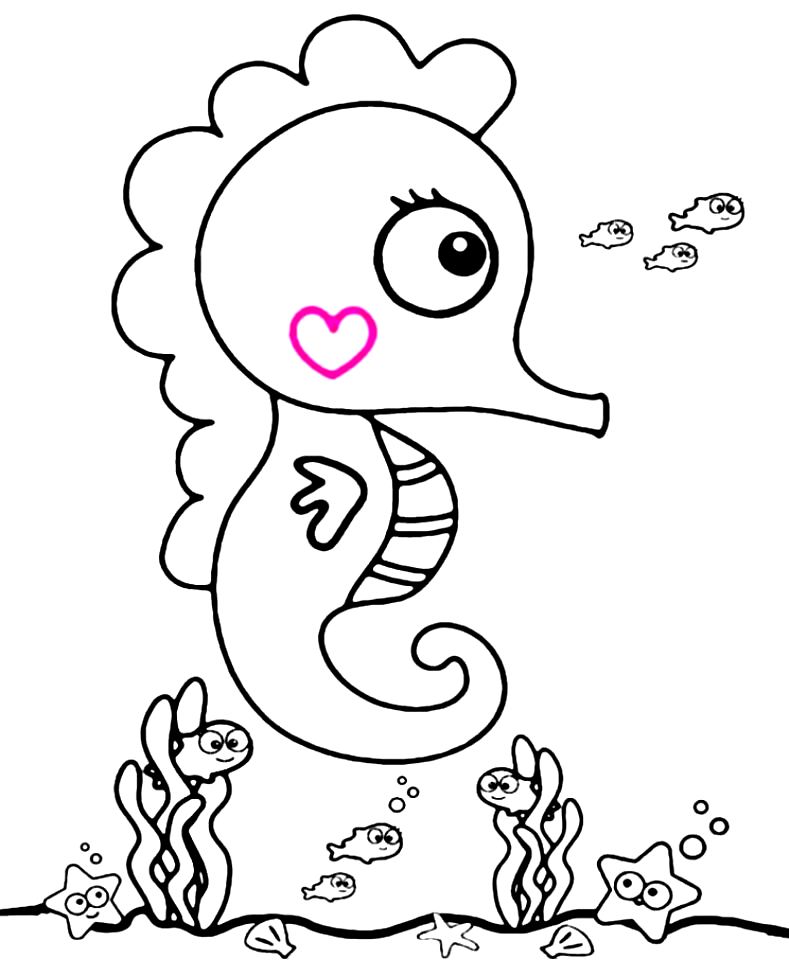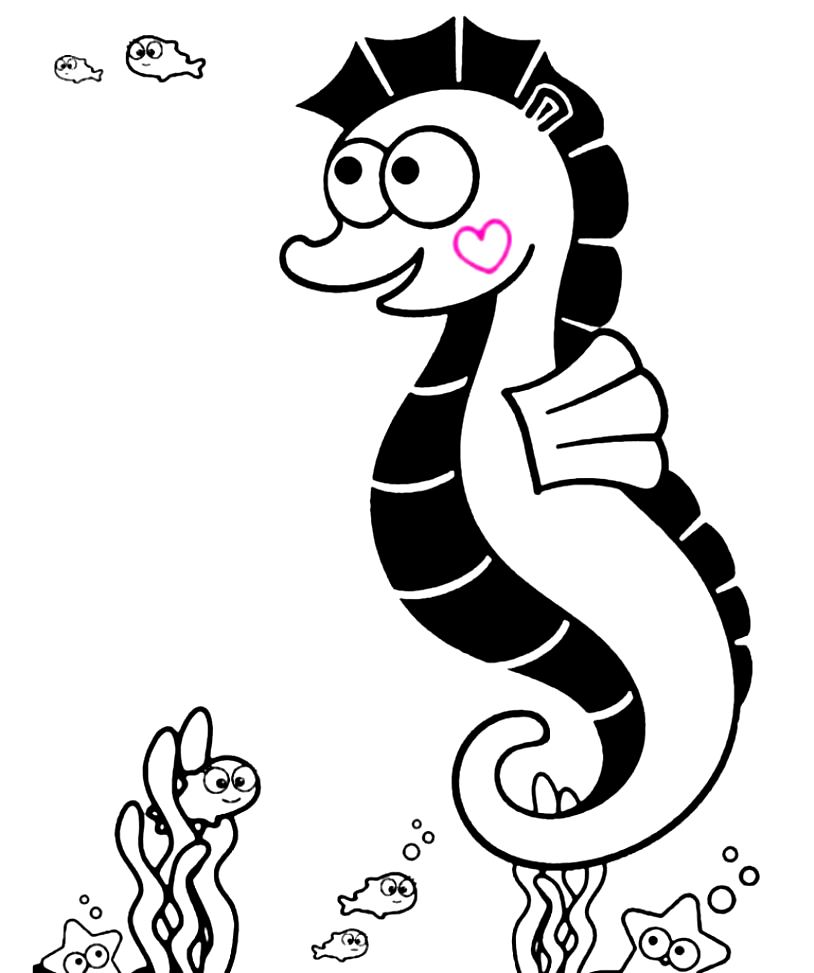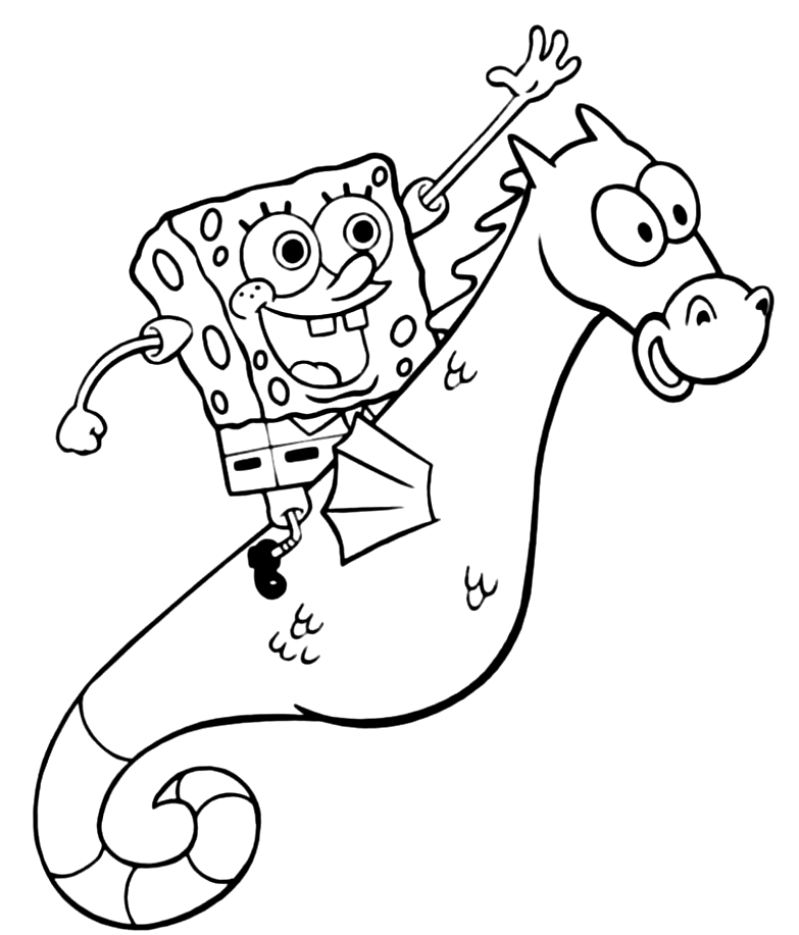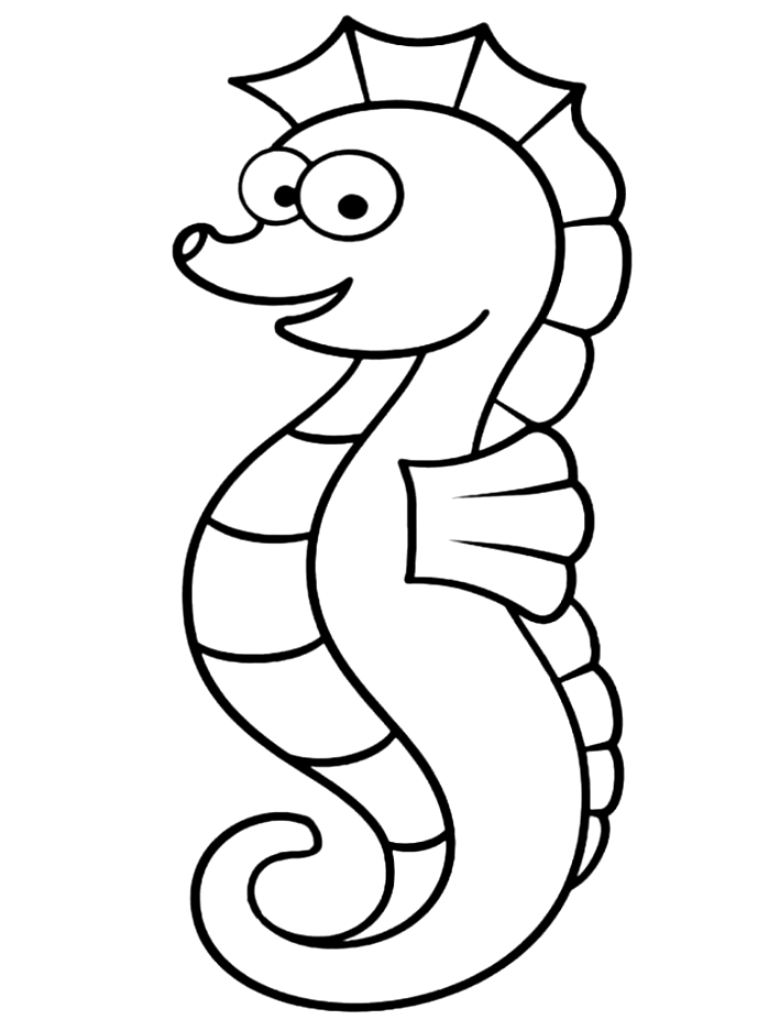Seahorses
The sea horses coloring pages are quite fun and incredible. You can reach the seahorse worksheet for free right now. Seahorses, one of the most beloved creatures of the sea, are quite extraordinary creatures when their features are considered. Deep in the seas, among colorful coral reefs and on calm ocean shores, there is a mysterious and fascinating species: seahorses. These lovely creatures represent the mystery and charm of the seas with their unique features and fascinating looks.
Seahorses coloring pages (free printable)
We examined a very interesting and cute animal sea horses coloring page together. Now let's look at detailed information about this creature. There are species of seahorses ranging in size from 16 mm to 35 cm. These species are found in temperate and tropical waters all over the world. Seahorses have gills on their hind fins and head, as well as pectoral fins next to them. Due to this physical appearance, they are in the category of fish. 40 species of seahorses have been discovered so far and their exact numbers are unknown. The seahorse population is in great danger due to overfishing in recent years. Seahorses are used in traditional Chinese herbalism, and that's why 20 million seahorses are caught and sold each year.
Habitats and Distribution: They generally continue their lives in temperate and tropical sea coastal waters. Based on the prime meridian, if you go 50 degrees north and 50 degrees south, the habitats of these fish can be observed. They mostly live in these given areas.
Body Dimensions and Shape: The length of this species, which mostly lives in warm waters, varies between 15 mm and 35 mm. Normally, fish reproduce with female eggs, while in this species, males experience pregnancy like females. The shape of this species is similar to a horse's head, with a body stretching from head to tail. Because of this similarity, sea horses got this name.
This species, which is related to sea dragons, can still be distinguished by shape. It is a species that can be easily distinguished by the fact that leaf-like structures protrude from their bodies and show themselves.
They have fins on their heads and on the back of their bodies that extend down from their heads. For this reason, this species qualifies as a fish. Some of the varieties found in nature have a colorless and transparent appearance. Thus, outsiders may not be aware of its existence.
Compared to many fish, the seahorse is a fish that continues to attract the attention of scientists even today. The biological characteristics of this fish species, which differ in many aspects both with the appearance of the males getting pregnant and with their body shapes, will be examined in detail under the next heading.
Sea Horse Biological Characteristics
General Biological Characteristics: In order to know the biological features of the seahorse, their life should be studied in detail. However, there is less information about these creatures compared to other fish. Studies have shown that this breed is highly susceptible to exploitation.
When examined in terms of reproduction, it produces several offspring in each cycle. Reproduction numbers and densities are not very high. Despite this small number, newborn fry show a faster and better development compared to the fry of fish that produce more eggs and fry. This is an event that balances the negative situation on one side.
Compared to many living things, male individuals of this species experience pregnancy. In addition, according to known data, this breed spends a long time in the care of the offspring. This is not common in fish. It takes a long time compared to other fish.
In their research, scientists examined different species of this genus and came across interesting information about the reproduction and sociality of these fish. For example; A seahorse that has lost its mate does not reproduce with a different fish until it finds another mate. This is a rare condition observed in some animals. However, this is very rare in fish.
If a habitat has a low population density, it should be understood that deceased or missing mates did not change locations quickly. Since the locations of this species are constantly monitored by the researchers, it has been revealed that there has been a decrease in the number of adult individuals. This has led to new legal regulations for fishermen.
1.Lifespans: Scientists usually calculate seahorse lifespans from laboratory analysis. Larger species have an average lifespan of 3 to 5 years. On the other hand, smaller species live for a period of close to 12 months.
When deaths are observed, small fry, usually eaten by another vertebrate and fish, come to the fore. This is a situation that endanger the continuation of the species. Older individuals of this species, which, like every animal, have to survive by meeting the conditions of natural selection, have hard and robust bony outer shells that allow them to camouflage against predators. Crabs are the greatest danger to this species.
If a habitat has a low population density, it should be understood that deceased or missing mates did not change locations quickly. Since the locations of this species are constantly monitored by the researchers, it has been revealed that there has been a decrease in the number of adult individuals. This has led to new legal regulations for fishermen.
2.Lifespans: Scientists usually calculate seahorse lifespans from laboratory analysis. Larger species have an average lifespan of 3 to 5 years. On the other hand, smaller species live for a period of close to 12 months.
When deaths are observed, small fry, usually eaten by another vertebrate and fish, come to the fore. This is a situation that endanger the continuation of the species. Older individuals of this species, which, like every animal, have to survive by meeting the conditions of natural selection, have hard and robust bony outer shells that allow them to camouflage against predators. Crabs are the greatest danger to this species.
Seahorses are hunted by different animals such as penguin, dorado, astuna and sea turtle. This result was reached by opening the rumen after the death of these animals.
Sea Horse Features
- There are about 40 known species of seahorses.
- Seahorses prefer to swim in pairs with their tails tied together.
- They swim upright and avoid predators by mimicking the color of underwater plants.
- Apart from crabs, very few seahorses eat seahorses – they are very bony and indigestible.
- Seahorses propel themselves using a small fin that flutters on their backs up to 35 times per second.
- Seahorses are rather clumsy swimmers due to their body shape and can easily die of exhaustion when caught in stormy seas.
- With their prehensile tails, they anchor themselves in seagrass and coral, using their long snouts to suck in plankton and small drifting crustaceans. Seahorses can suck food from a distance of 3 cm.
- Seahorses constantly feed on plankton and tiny fish. It moves each of its eyes independently so it can follow its movement past marine life without letting go of its presence.
- Seahorses do not have teeth or stomachs. Food passes through their digestive systems so quickly that they must eat almost constantly to survive.
- They can consume 3,000 or more brine shrimp a day.
- Seahorses are monogamous and mate for life.
- The seahorse participates in an eight-hour courtship dance that involves swirling around, swimming side-by-side, and changing colours.
- During mating, the female seahorse lays up to 50 eggs in a pouch on the male's abdomen.
- The male seahorse carries the eggs in his pouch until they hatch, after which the fully formed miniature seahorse releases them into the water.
Coral Reefs
Seahorses are most commonly found in underwater ecosystems known as coral reefs. Coral reefs are native to tropical waters and thrive in warm, clear, nutrient-rich waters. Seahorses can camouflage among the colorful corals of the reefs and hunt in this habitat.
Kelp Forests
Kelp forests are a type of marine plant common in regions with cold waters. Seahorses can hide safely among kelp leaves and track their prey in this rich habitat. Kelp forests are common, especially in areas of the western Pacific Ocean, such as North America and Australia.
Seagrass Meadows
Seagrass meadows are found in shallow sea areas, especially in coastal areas. These meadows are an ecosystem of plants with roots on the seafloor. Seahorses can raise their young in seagrass meadows and prey on small fish and crustaceans for food. These areas are also ideal for seahorses to use their camouflage abilities.
Lagoons and Bays
Lagoons and bays are other habitats where seahorses can be found in shallow waters. These regions are wetlands with a connection between the land and the sea. In lagoons and bays, seahorses can track their prey, hide and breed.
Although seahorses are found in a variety of habitats, there may be specific habitats each species prefers. For example, some seahorse species live only on coral reefs, while others prefer more seagrass meadows. The diversity in the habitats of these creatures shows the ability of seahorses to exist in different ecosystems.


